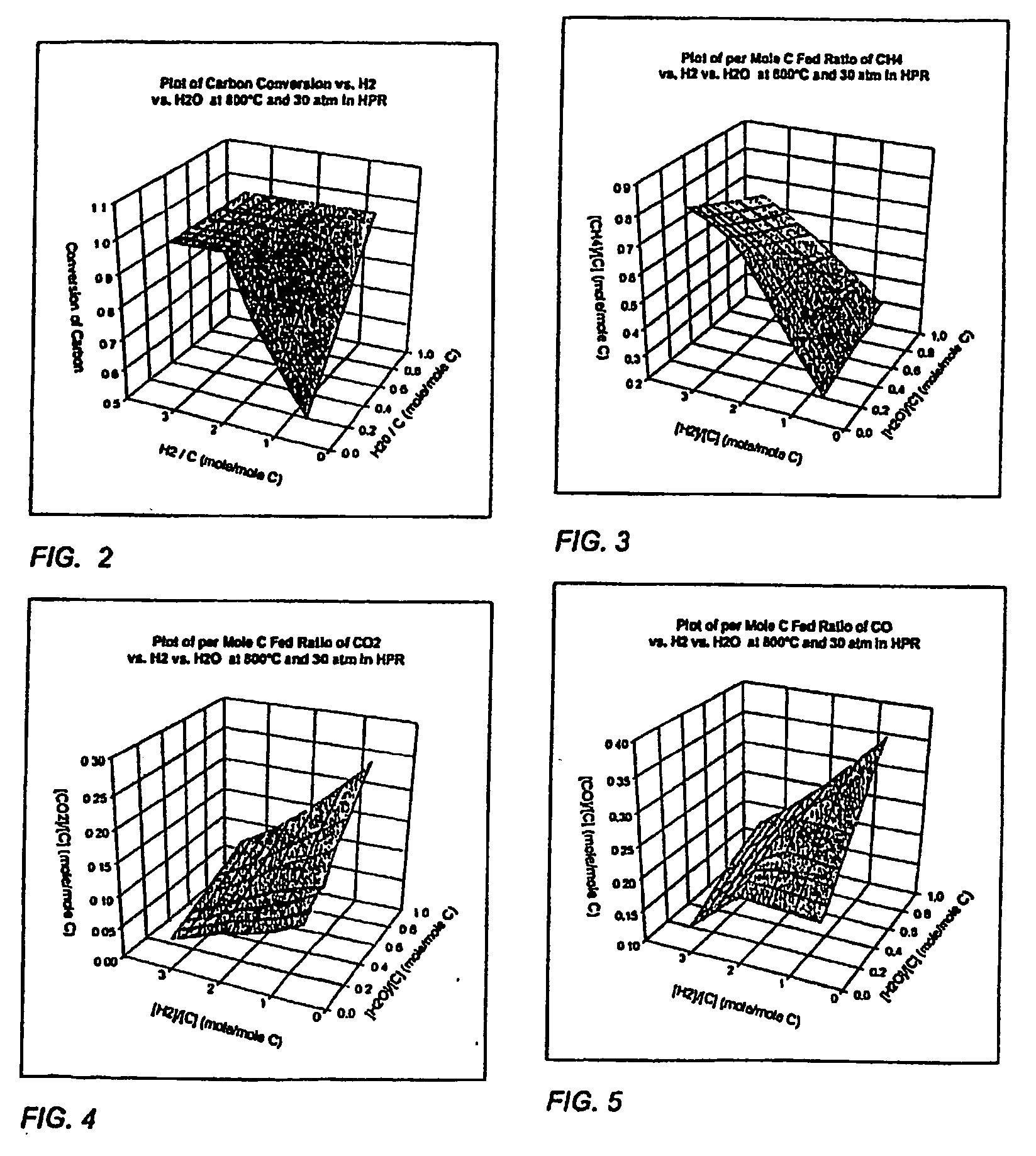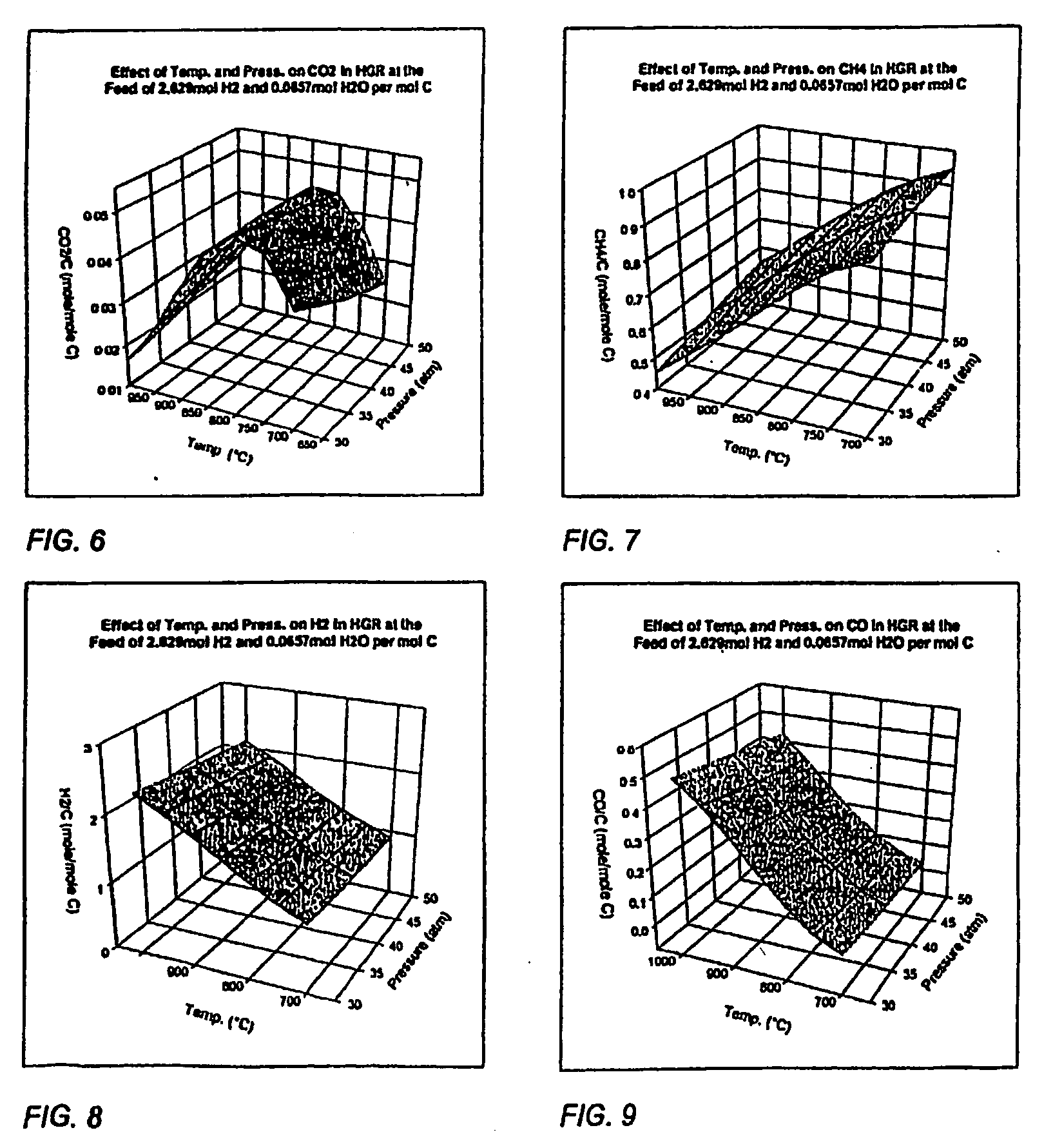Production of synthetic transporation fuels from carbonaceous material using self-sustained hydro-gasification
- Summary
- Abstract
- Description
- Claims
- Application Information
AI Technical Summary
Benefits of technology
Problems solved by technology
Method used
Image
Examples
Embodiment Construction
[0062] A steam generator for pyrolysis, hydro-gasification reactor (HGR) and steam pyrolytic reformer (SPR) (also called a steam pyrolytic reactor, steam reformer or steam reactor) such as used in a Hynol process, may be utilized to produce the synthesis gas (syngas) through steam pyrolysis of the feed stock, hydro-gasification and steam reforming reactions. The reactions start in the HGR to convert carbon in the carbonaceous matter into a methane rich producer gas and continue through the SPR to produce synthesis gas with the correct hydrogen and carbon monoxide stiochiometry for efficient operation of the Fischer-Tropsch process. With the Fischer-Tropsch process as the final step in processing, products such as synthetic gasoline, synthetic diesel fuel and recycled water can be produced.
[0063] The feedstock requirement is highly flexible. Many feeds that consist of different carbonaceous materials can be wet milled to form a water slurry that can be fed at high pressure into a st...
PUM
| Property | Measurement | Unit |
|---|---|---|
| Temperature | aaaaa | aaaaa |
| Mass | aaaaa | aaaaa |
| Fraction | aaaaa | aaaaa |
Abstract
Description
Claims
Application Information
 Login to View More
Login to View More - R&D
- Intellectual Property
- Life Sciences
- Materials
- Tech Scout
- Unparalleled Data Quality
- Higher Quality Content
- 60% Fewer Hallucinations
Browse by: Latest US Patents, China's latest patents, Technical Efficacy Thesaurus, Application Domain, Technology Topic, Popular Technical Reports.
© 2025 PatSnap. All rights reserved.Legal|Privacy policy|Modern Slavery Act Transparency Statement|Sitemap|About US| Contact US: help@patsnap.com



